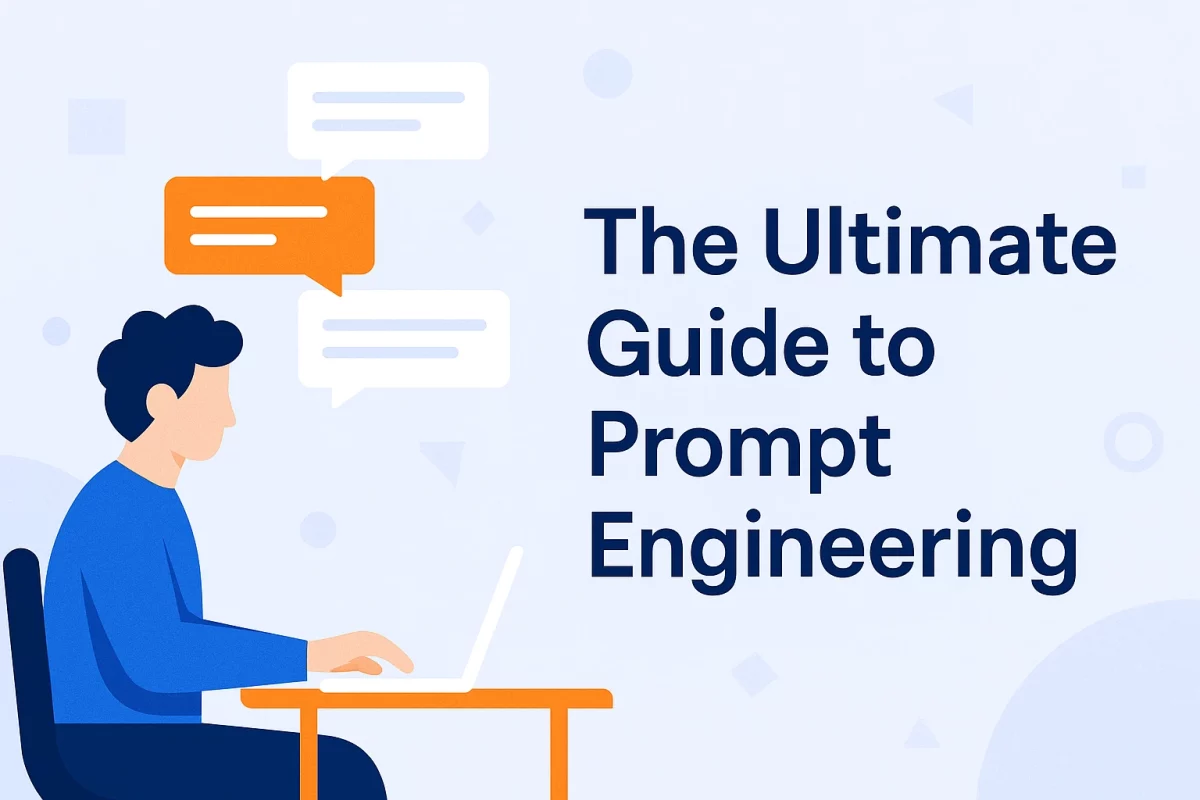The Ultimate Guide to Prompt Engineering (2025 Edition)
Introduction: Why Prompt Engineering Matters in 2025
If you have ever typed something into ChatGPT or Claude and thought, “This sounds robotic”, you are not alone. The difference between a bland AI response and something truly useful often comes down to one skill: prompt engineering.
Prompt engineering is more than just telling an AI what to do. It is about how you tell it. The clearer, more structured, and more intentional your prompt, the better the results. With newer, more capable models available, the opportunity to master this skill is bigger than ever.
This guide is designed as a comprehensive resource. We will cover the fundamentals, advanced techniques, real-world use cases, and tools that make your life easier. We will also link you to deeper dives such as Why Your AI Sounds Robotic (and How to Fix It) and Prompting Personas so you can build your skills step-by-step.
What Is Prompt Engineering?
Prompt engineering is the practice of designing and refining the text (or other inputs) you give to an AI so that it produces the output you actually want. It applies whether you are using ChatGPT, Claude, Midjourney, or any other AI model.
Think of it like giving instructions to a chef. If you just say “make food,” you will get something, but maybe not what you had in mind. If you say “make a vegetarian pasta with fresh basil, garlic, and cherry tomatoes,” you will get exactly what you envisioned.
Why It Matters
- Efficiency - Less back-and-forth to get a usable result.
- Quality - More accurate, creative, or tailored outputs.
- Control - You shape the tone, detail, and style.
Prompt engineering is now a sought-after skill in tech, marketing, education, and many other industries. As AI continues to evolve, those who can guide it effectively will stand out.
Core Principles of Prompt Engineering
- Be Specific - Replace vague instructions with detailed ones.
- Give Context - Tell the AI the role it is playing and the scenario.
- Set Constraints - Limit length, style, or format.
- Show Examples - Demonstrate exactly what you want.
- Iterate - Refine based on what the AI gives you.
For a breakdown of common pitfalls, see ChatGPT Prompt Tips.
Prompt Engineering Examples
Basic Prompt
Write a blog post about productivity.
Engineered Prompt
You are a productivity coach writing for busy freelancers. Write a 700-word blog post in a conversational tone with actionable tips, three subheadings, and a motivational closing.
The second example gives role, audience, format, tone, and structure, guiding the AI toward something specific and high-quality.
More inspiration: AI Prompt Examples.
Prompting Techniques You Should Know
1. Persona Prompting
Give the AI a character to adopt. This changes the style and perspective of the response.
- Example: “Act as a seasoned project manager with 10 years of Agile experience…”
- Learn more: Prompting Personas
2. Chain-of-Thought Prompting
Ask the AI to walk through its reasoning step-by-step before answering.
- Example: “Explain your reasoning step-by-step, then provide your final answer in bold.”
3. Few-Shot Prompting
Show the AI several examples of the kind of output you want, then ask it to continue.
4. Role + Constraints Combo
Pair a role assignment with strict output rules.
- Example: “You are a copy editor. Review the following paragraph for grammar and rewrite it in under 100 words.”
Advanced Prompt Engineering for GPT-5
GPT-5’s improved reasoning and context handling means you can:
- Give it longer, multi-part prompts.
- Ask for more complex formats such as tables, scripts, and multi-stage outputs.
- Use iterative refinement loops where GPT-5 critiques and improves its own output.
See: Advanced Prompt Engineering.
How to Write a Prompt for ChatGPT
- Start with the goal - What do you want?
- Add role and context - Who is speaking? What is the scenario?
- Specify format and tone - How should it read?
- Provide examples if possible.
- Review and refine - Ask the AI to adjust based on your feedback.
For more, see: ChatGPT Prompts for Beginners.
Real-World Use Cases
- Content Creation - Blog posts, scripts, ad copy.
- Education - Lesson plans, study guides.
- Business - Reports, email templates.
- Creative Work - Poetry, storytelling, art prompts.
Each of these categories can be improved with careful prompt design. For example, a business report prompt might include the industry, target audience, key metrics, and tone, while an art prompt might describe style, color palette, and subject in detail.
For more, see 10 AI Prompts Every Freelancer Should Know.
Tools to Improve Your Prompt Engineering
- PromptCraft - Our 6-step formula tool to turn rough ideas into optimized prompts.
- Keyword research tools for SEO-focused prompts.
- AI prompt libraries for inspiration.
See: Best Prompt Engineering Tools.
Case Study: Improving a Prompt Step-by-Step
Imagine you need a social media caption for a new product launch.
Initial Prompt:
Write a caption for my new product.
Refined Prompt:
You are a marketing copywriter creating an Instagram caption for a tech gadget aimed at remote workers. The tone should be friendly but professional, under 150 characters, and include a call-to-action.
The refined prompt is specific, sets a role, defines tone, and sets constraints. This leads to a caption that is more likely to resonate with your audience.
Conclusion and Next Steps
Prompt engineering is the difference between mediocre and outstanding AI results. With the principles, techniques, and tools in this guide, you are ready to start getting exactly what you want from AI.
Here is your next move:
- Read Why Your AI Sounds Robotic to fix tone issues.
- Experiment with persona prompting.
- Use PromptCraft to optimize your next prompt.
The more you practice, the better your instincts will become, and soon you will not just be using AI. You will be directing it like a pro.
